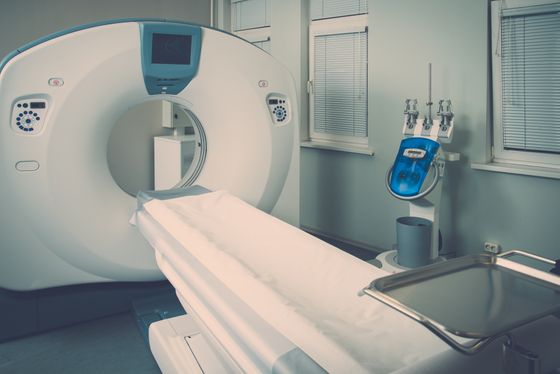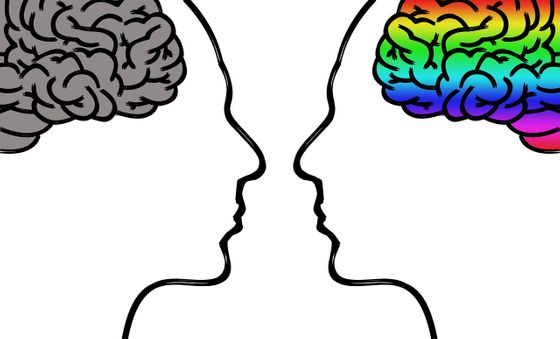The latest brain neuroscience reveals that the brains of two people looking at each other are synchronized

by
Although there are still many unknown areas in the brain's work, it has not been well understood for a long time, especially what is happening to the brains of people in communication. However, as technology advances, we are beginning to understand what is happening to the brain little by little. The science-based media Scientific American has put together this new field, named “interactive neuroscience”.
'Hyperscans' Show How Brains Sync as People Interact-Scientific American
https://www.scientificamerican.com/article/hyperscans-show-how-brains-sync-as-people-interact/
It's been recent that I have begun to understand the effects of communication on my brain The oldest research in this field is the 2002 experiment conducted by Dr. Reed Montague on America. This experiment is a simple thing to have the subjects talk while scanning the brains of two subjects with separate MRIs . This method, named 'Hyperscan', has attracted attention at the time as a demonstration experiment that it is possible to observe the brains of two people in communication, and from this point on, ' EEG (EEG)' and ' MEG It has been refined with the development of various brain science related technologies such as MEG) and “ NIRS Brain Measurement System ”.

by
Having done the same thing, it was Dr. Elizabeth Redokee, who studies psychology at the University of Maryland, who found that the brain works differently for one and more than one. When Dr. Redkei observed the brain of a person talking to someone through video chat, it turned out that the part related to the reward system or sociality is activated in the brain during communication. In addition, when the doctor conducted a similar study in a child in the developmental stage of the brain, the brain of the child in the state of ' joint attention ' to see things he / she is focusing on with other people is one. It has also been found that the activity of the ' temporo-temporal junction ' area that is responsible for the distinction between self and others is significantly different than when looking at
As well as looking at things, Dr. Leonhard Schilbach, a social neuroscientist working for the Max Planck Institute of Psychiatry , is focusing on 'sight' as well. According to Dr. Schilbach, even a very simple act of looking at or looking back at a person has been shown to stimulate the brain's reward system and ventral striatum . From this, he commented, 'The area in which the brain recognizes human actions and the area in which they understand the other's mind is much closer than ever imagined.' .
The proof of this is the research of Professor Yoshihiro Sedo of the Physiological Institute of Japan. Prof. Seido observed the activity of two people looking at each other's brain using an MRI system ( fMRI ) that can measure the brains of multiple people simultaneously. As a result, as a result, it found to exhibit an activity of the brain, such as people with each other is like you are eye contact, that the brain of each other is synchronized by eye contact was found .

by ElisaRiva
It is known that the human brain synchronizes not only in eye contact but also in conversation. Dr. Uri Hasson, a neuroscientist at Princeton University , asked the first one of the two subjects to read the story, and a recording of this to the other subject, two brain activities I checked. As a result, while listening to the story, the listener's brain showed the same activity as the reader's brain. I also found that the more similar the brain activity, the higher the listener's understanding of the story. As for the results of this experiment, Dr. Hasson has stated that 'The brain of an individual is being driven by the brain of another person in contact with it.'
Also, a research group from Professor David Peppel of New York University conducted experiments with students to find out that the brains of teachers and students in class were synchronized. In addition, we also know that the more similar the student's brainwaves to the teacher's brainwaves, the better the understanding of the class. This suggests that the brain is synchronized not only between the two communicating parties but also in more groups.
In an interview with Scientific American, Dr. Silbach stated, 'With the development of interactive neuroscience, we can predict which therapist will be suitable for a certain psychotic patient,' the perspective of psychiatry Indicated that further progress is expected.
Related Posts:
in Science, Posted by log1l_ks







